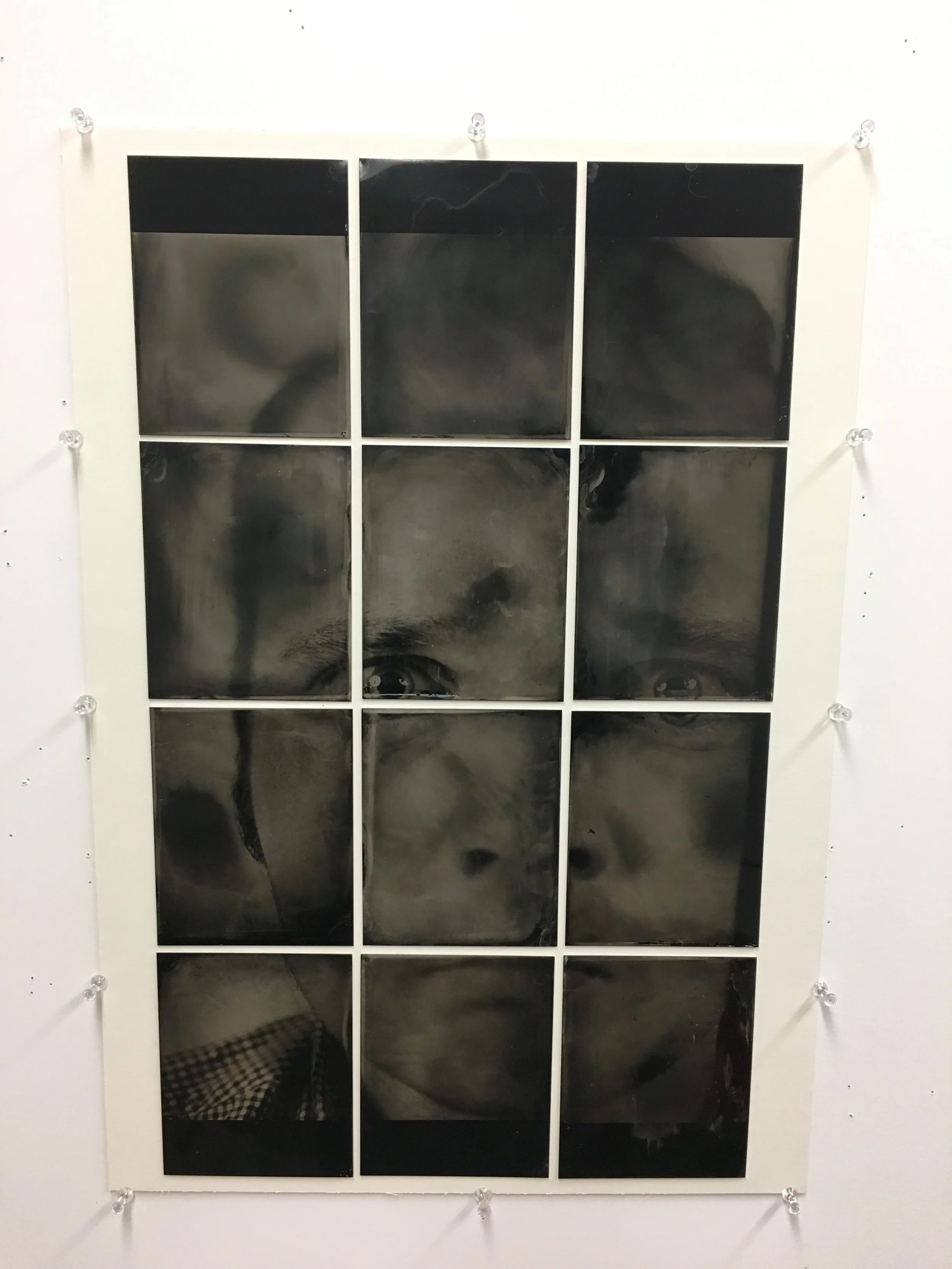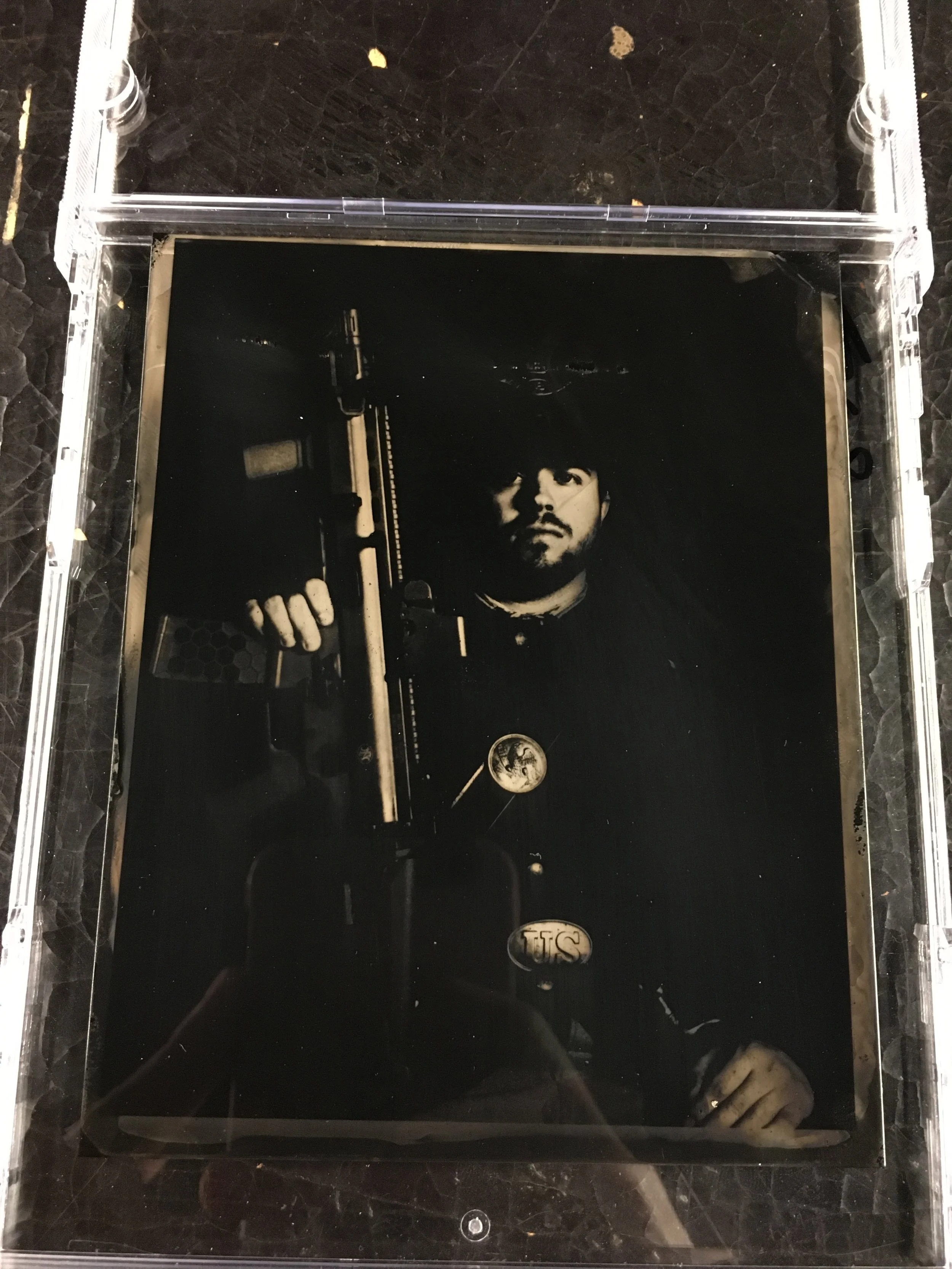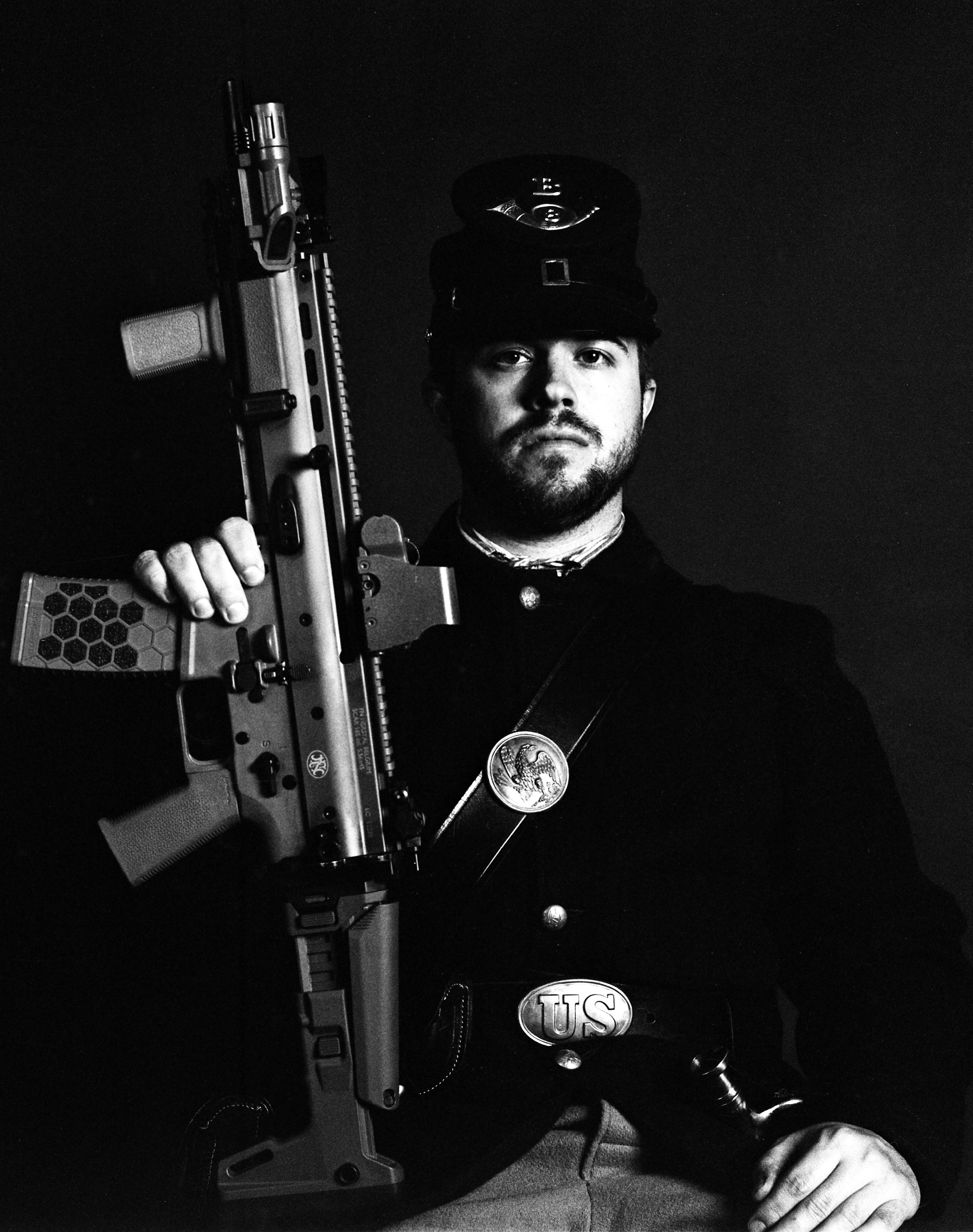For my final project in ART 568, I decided that I wanted to continue using the wet Collodion process. As for the content of my project, I decided to expand a single image that I had taken of a friend of mine and print it on 12 separate plates, then arrange them into a single piece. I chose this image in particular because I loved the way it came out. I was using a Toyo 4X5 field camera, and by manipulating the front element on the camera, I was able to mimic the shallow depth of field that early lenses are able to achieve. This allowed me to intentionally keep only the strip around my model's eyes in focus while the rest of the image is blurred.
The final mock-up of my project is posted below with a digital version to show the image before I split it up for printing.























